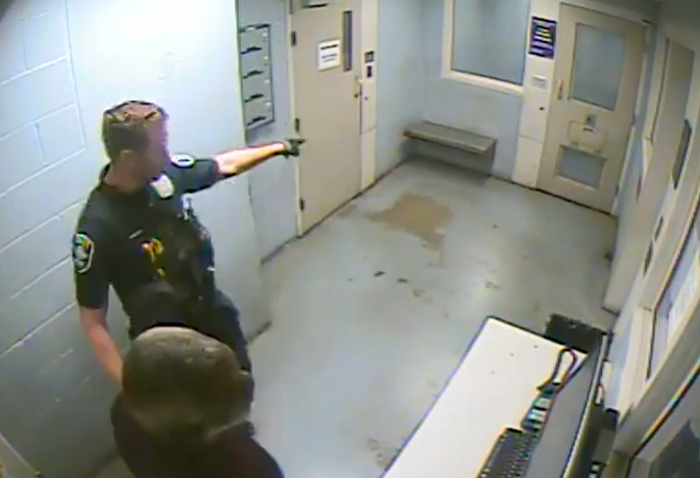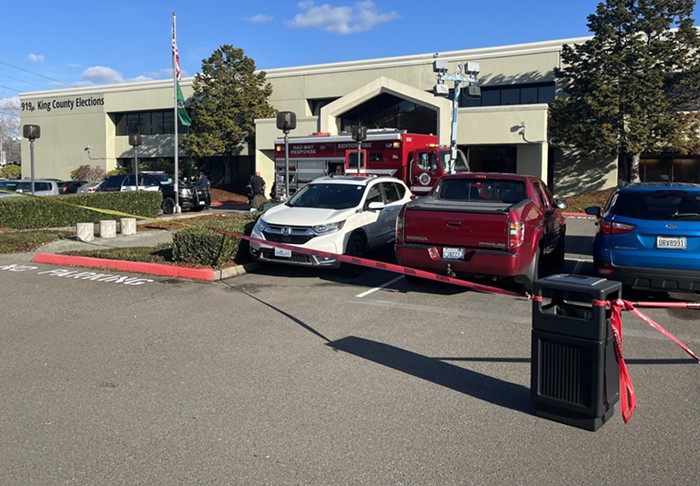
- Tunnel photo by Greg Phipps / WSDOT
- FEARLESS LEADERS Downtown Seattle Association's Kate Joncas, city council member Tom Rasmussen, Mayor Ed Murray, and a guy playing golf.
Four years ago, politicians told us that building a $4.2 billion underground freeway would be no problem. Even though this freeway would require digging the widest deep-bore tunnel in the world (58 feet), elected leaders said not to worry about it. Even though 90 percent of transportation megaprojects run over budget—tunnels by an average of 34 percent, according to research from Oxford University—the politicians involved insisted this project would never run over budget. This project would not be delayed. This project was the exception.
Ha-ha-ha.
Bertha, the $80 million drill, broke down underneath downtown Seattle in December 2013. The seals are broken and a central bearing is busted, and the state still doesn't know exactly why. Contractors are planning to attach 86 tons of steel ribs to reinforce Bertha's structure, but a construction official told the Seattle Times this week that they actually "don't know" what problem those ribs will fix. This underscores that the tunnel constitutes an untested, unprecedented technical challenge—Bertha is the widest tunneling machine ever built, and it is attempting to penetrate an infamously complicated mix of waterfront soil, rocks, and seawater. Contractors say they won't have Bertha running again until March 2015, or possibly later: "It is too soon to know if they will meet this milestone," says a state spokesperson. Another spokesperson says he is "skeptical" of that timeline. The tunnel was supposed to open in late 2015, but now the new estimate is November 2016. But who knows.
Costs are racking up. The contractor is now asking for an additional $188 million to cover unexpected expenses, much of which the state refuses to pay, so it looks increasingly likely that the contractor could sue the state—or, if costs rise too much, possibly abandon the project.
Really.


















